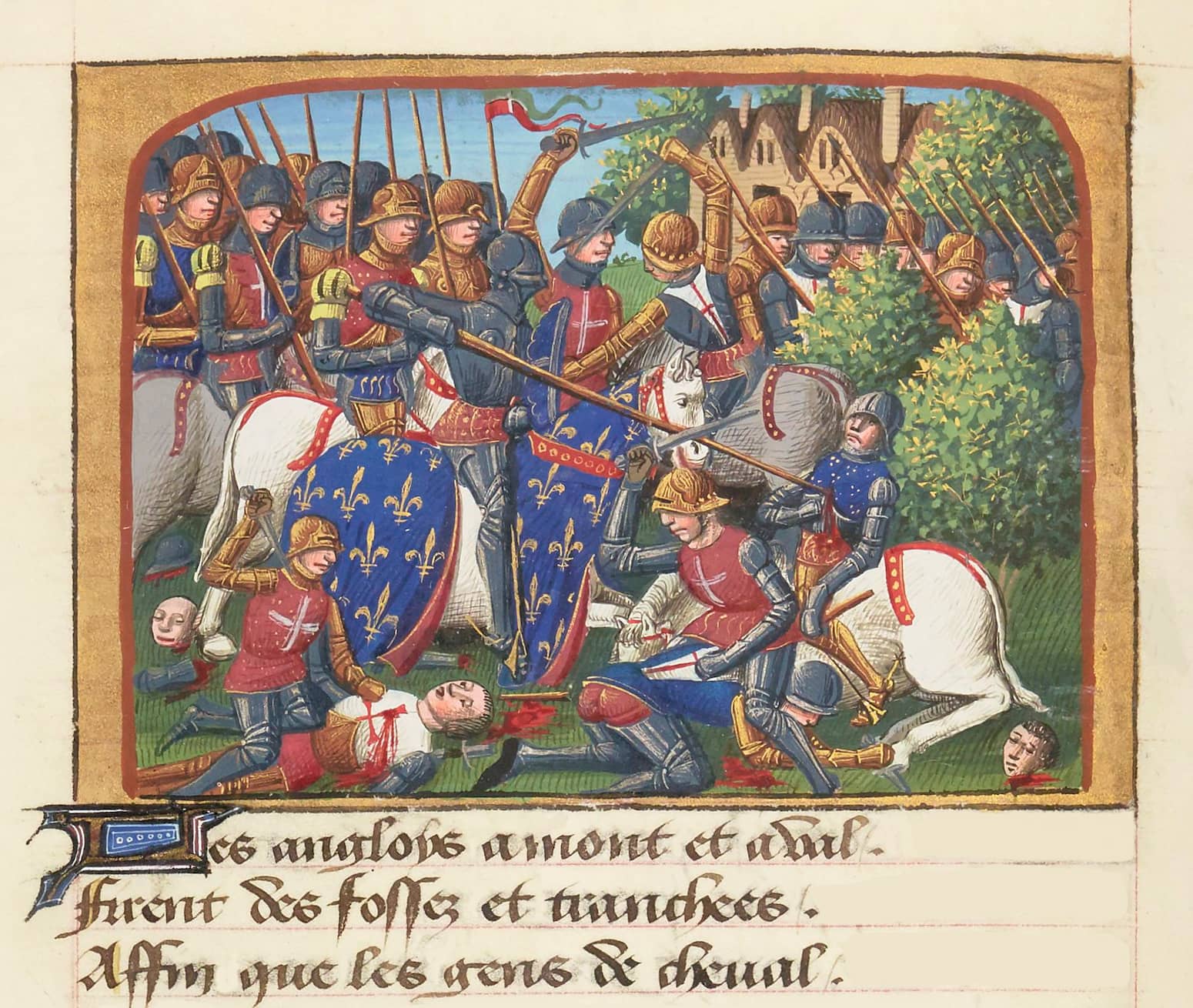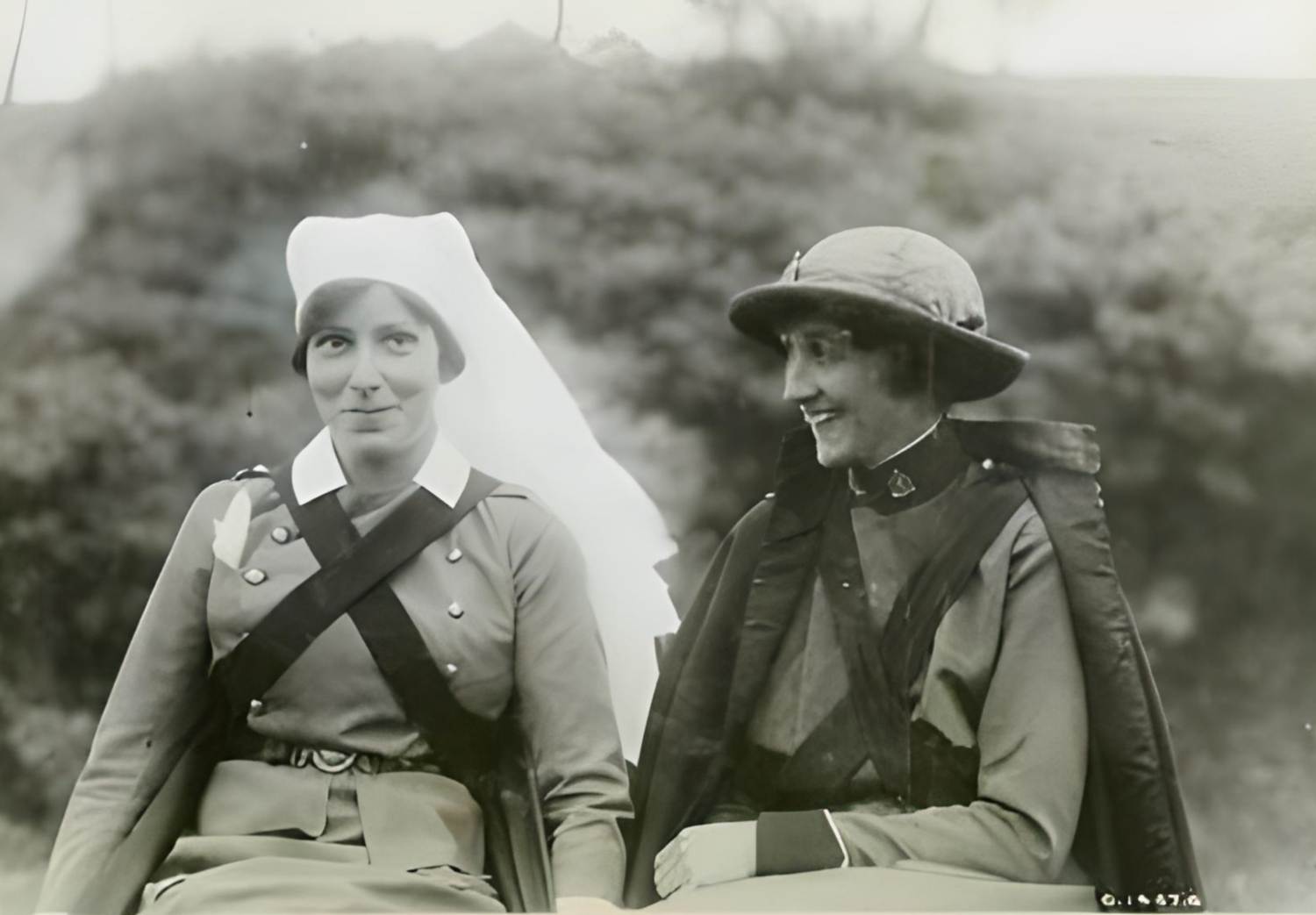In 1450, Charles VII undertook the reconquest of Normandy. While a new English army lands in Cherbourg, the King of France sends John II, Duke of Bourbon to intercept it. On April 15, 1450, the two forces clashed in the Battle of Formigny. After several hours of fighting, the Breton cavalry arrives on the battlefield and routs the English army. The Hundred Years’ War is concluded in the region, and it reverts to French control. Charles VII can now turn his attention to Guyenne.
—>The Battle of Formigny involved a French force, led by Charles VII, confronting an English army. The French employed effective military tactics, including the use of artillery, to secure a decisive victory.
What Was the Context of the Battle of Formigny?

Since 1337, a dynastic conflict has opposed the Kingdom of France to the Kingdom of England. Under the influence of Joan of Arc, the King of France, Charles VII, decided to reclaim the territories held by the English. In 1450, the monarch and his Breton allies embarked on a campaign in Normandy under English dominance for 30 years.
As a new army lands in Cherbourg, Charles VII dispatches the Count of Clermont, John II, Duke of Bourbon, to intercept them. The British and French forces faced each other on the morning of April 15, 1450, at Formigny, near Bayeux.
Who Took Part in the Battle of Formigny?
The Battle of Formigny witnessed the Kingdom of England confronting the Kingdom of France and the Duchy of Brittany. Under the command of Sir Thomas Kyriell, the English forces comprised nearly 7,000 soldiers, including a significant number of archers.
Opposing them were John II, Duke of Bourbon and Arthur III, Duke of Brittany, Count of Richemont, leading around 4500 soldiers. Among them, approximately 2500 were infantry, 2000 were cavalry, and two culverins were also present. These long-barreled cannons, previously employed in sieges, were utilized in this instance as field artillery.
How Did the Battle Unfold?

On the morning of April 15, 1450, John II, Duke of Bourbon intercepted the English army near the village of Formigny. Following the British strategy, Thomas Kyriell organized his troops into battle formation, placing archers protected by stakes at the front and awaiting the French charge. However, unlike at Crécy or Azincourt, the French did not fall into the trap.
The Count of Clermont deployed his infantry out of range of the Welsh archers and advanced his culverins. The two cannons quickly wreaked havoc in the English ranks, prompting them to launch an assault and capture the French artillery. With no news from the Bretons, John II, Duke of Bourbon decided to retrieve his war machines.
For three hours, a close-quarters melee ensued between the two armies. Kyriell, who had kept some of his troops in reserve, missed the opportunity to deliver the decisive blow to the French. 1500 Breton cavalry, under the command of the Arthur III, Duke of Brittany, emerged on the battlefield, routing the English forces.
Who Won the Battle of Formigny?
The timely arrival of the Breton cavalry changes the outcome of the Battle of Formigny. The troops under the command of John II, Duke of Bourbon, and Arthur III, Duke of Brittany, won handily despite having a numerical disadvantage (4500 French against 7,000 English). The British lines are breached and quickly disintegrate.
The fleeing soldiers had to retreat to the village of Formigny, and many were killed during their withdrawal. The Welsh archers, despised by the French since the beginning of the Hundred Years’ War, are massacred. Thomas Kyriell was taken prisoner.
What Were the Consequences of the Battle?
The Battle of Formigny marked the end of the English presence in Normandy after 30 years of occupation. The human toll amounted to approximately 4,400 deaths (3,800 in English and 600 in French) and over 1,200 prisoners. Following this victory, the remaining British strongholds quickly fell: the French besieged Vire, and the Bretons besieged Avranches.
By the summer of 1450, Normandy had returned to the realm of the Kingdom of France. The Hundred Years’ War concluded in the region. The Battle of Formigny definitively thwarted the ambitions of the English crown over Normandy, leading to a severe crisis in the kingdom, teetering on the brink of civil war.
Following the reconquest of Normandy, the French turned their attention to Guyenne, the last region still held by the English. On July 17, 1453, Charles VII’s army achieved another decisive victory in the Battle of Castillon. French artillery and Breton cavalry played a significant role once again. After this defeat, Castillon and then Bordeaux capitulated, and Guyenne reverted to French control.
The English were expelled from France, retaining only Calais, which would be recaptured a century later, in 1558. The signing of the Treaty of Picquigny on August 29, 1475, officially confirmed the end of the Hundred Years’ War. Through this agreement, King Edward IV of England recognized Louis XI as the sole legitimate king of France, marking the end of a conflict that endured for 116 years.






